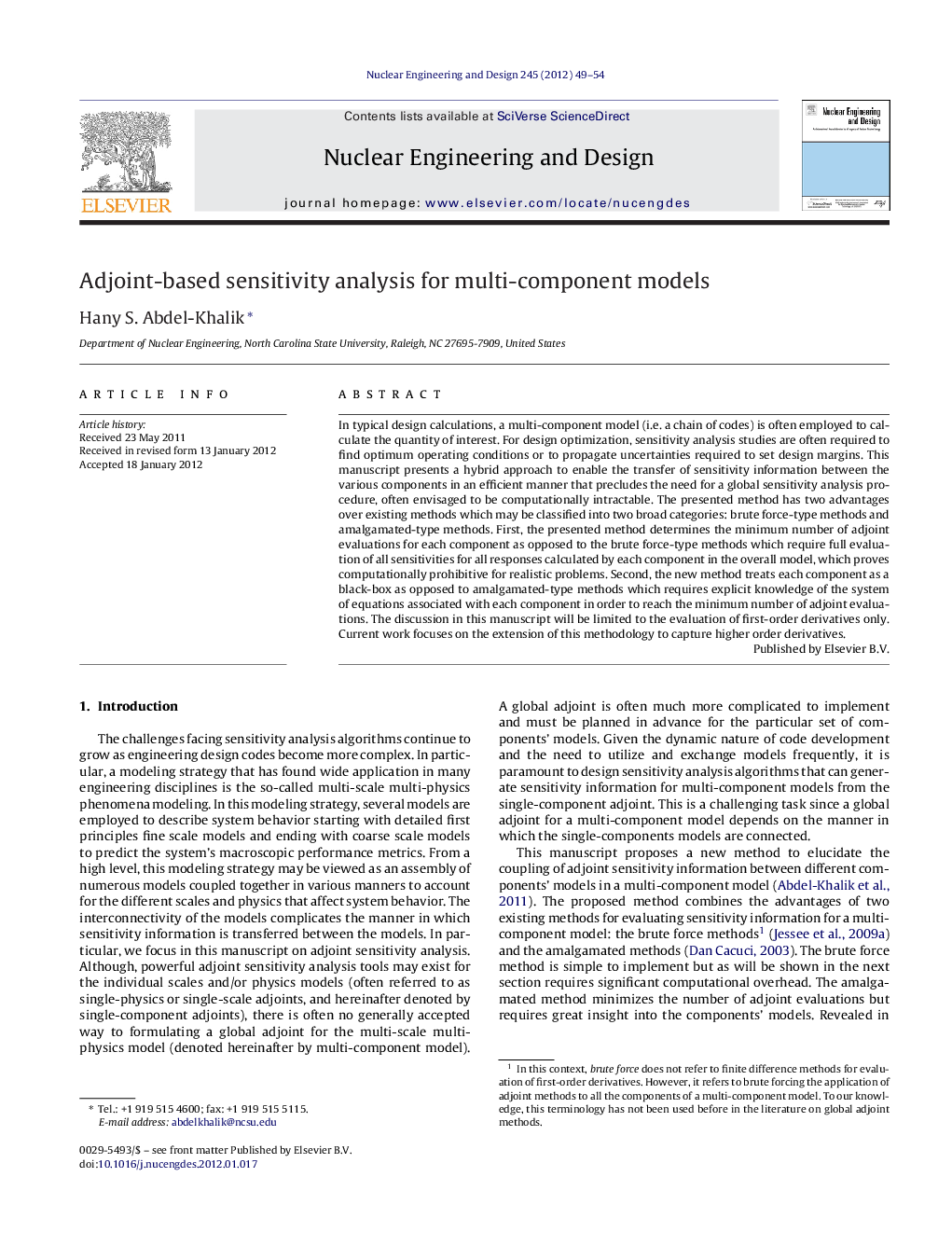| کد مقاله | کد نشریه | سال انتشار | مقاله انگلیسی | نسخه تمام متن |
|---|---|---|---|---|
| 297308 | 511754 | 2012 | 6 صفحه PDF | دانلود رایگان |

In typical design calculations, a multi-component model (i.e. a chain of codes) is often employed to calculate the quantity of interest. For design optimization, sensitivity analysis studies are often required to find optimum operating conditions or to propagate uncertainties required to set design margins. This manuscript presents a hybrid approach to enable the transfer of sensitivity information between the various components in an efficient manner that precludes the need for a global sensitivity analysis procedure, often envisaged to be computationally intractable. The presented method has two advantages over existing methods which may be classified into two broad categories: brute force-type methods and amalgamated-type methods. First, the presented method determines the minimum number of adjoint evaluations for each component as opposed to the brute force-type methods which require full evaluation of all sensitivities for all responses calculated by each component in the overall model, which proves computationally prohibitive for realistic problems. Second, the new method treats each component as a black-box as opposed to amalgamated-type methods which requires explicit knowledge of the system of equations associated with each component in order to reach the minimum number of adjoint evaluations. The discussion in this manuscript will be limited to the evaluation of first-order derivatives only. Current work focuses on the extension of this methodology to capture higher order derivatives.
► We present a sensitivity analysis method for models composed of many components.
► The method addresses the huge volume of information passing between components.
► The method hybridizes variational and forward methods, and is implemented non-intrusively.
► A prototype reactor model demonstrates the method to calculate first order derivatives.
► We check the numerical accuracy of the derivatives calculated by the new method.
Journal: Nuclear Engineering and Design - Volume 245, April 2012, Pages 49–54